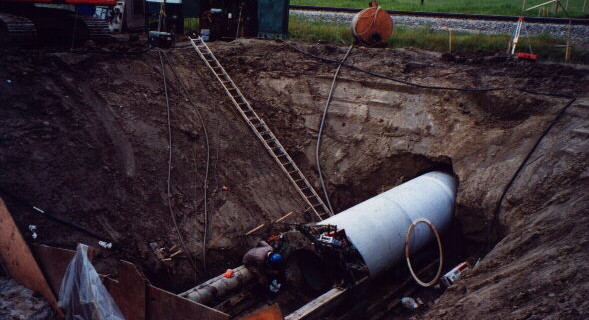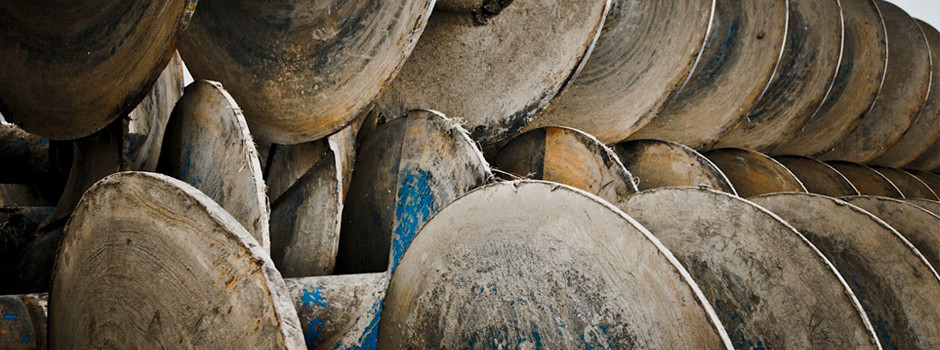
METHOD DESCRIPTION
Pipe jacking is a trenchless technology method for installing pipe from a drive shaft to a receiving shaft employing hydraulic jacks to force pipe through the ground via pipe-to-pipe interaction as the jacking face is excavated mechanically with a tunnel boring machine (TBM). In addition to the hydraulic jacks and the TBM, a pipe lubrication system, which decreases jacking force, and intermediate jacking stations, which are used to redistribute forces between the drive shaft and TBM along the drive, are required for projects with various soils conditions and drive lengths. Spoil is removed from within the pipe and TBM, behind the cutter head, using a conveyor belt and mud bucket/rail system. The spoil removal process and control of alignment and grade requires operators to be inside the TBM during the operations. This is where pipe jacking differs from microtunneling, the minimum recommendation in pipe diameter is 42” due to this condition. A laser is used to monitor both line and grade, resulting is a high degree of accuracy, and installation can be achieved within 25mm.
TYPICAL AREAS OF INSTALLATIONS: Deep Installations, Unsuitable Soil Conditions, Large diameter utilities >1050mm
MAIN APPLICATIONS: Graded Sanitary & Storm Sewers – Gravity Pipes, Deep Installations
PIPE MATERIALS: A wide range of pipe materials; concrete, steel, vitrified clay tile, polymer mortar, fiberglass/resin based.
SOIL CONDITIONS: This method can be used in a variety of soil conditions.
DIAMETER RANGE: Pipe jacking can be used to install pipe from 1000mm (42”) – 3000mm (120”).
DRIVE LENGTH: 12m (40’) – 200m (656’)
ACCURACY: Pipe jacking is capable of highly precise gravity flow installations to +/- 25mm (1”) of design.
